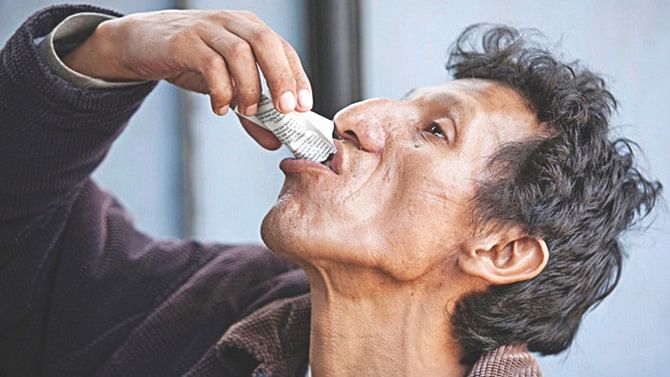Tackling drug resistant TB in Bangladesh
Tackling drug resistant TB in Bangladesh

Tuberculosis (TB) caused by the infectious agent called Mycobacterium tuberculosis is generally respond well to anti-TB drugs. In some persons, these first line drugs are not effective as the causative organism becomes resistant to these. This condition is known as Multidrug-resistant Tuberculosis (MDR-TB).
Globally, an estimated 450,000 people developed MDR-TB and at least 170,000 deaths were caused by the disease in 2012. Bangladesh ranks 10th among 27 high MDR TB burden countries. The emergence of MDR-TB has become a major threat for TB control in Bangladesh.
A general TB patient gets cured completely if he/she takes drugs takes for six month regularly. If the patient does not take drugs regularly, or does not complete full course or if the drugs are below quality, then TB germs become drug-resistance. This is called MDR-TB and it generally not cured with existing drugs. The patients have to take new drugs for about 22 to 24 months.
According to World Health Organisation (WHO) estimate, there are 10,000 MDR-TB patients in Bangladesh. Ironically, many of these MDR-TB patients stay out of the treatment facilities for various reasons. Most of them cannot afford to stay in the hospital for long 2 years. These people pose a great risk of contracting the MDR-TB germ to other people rising the burden further.
A WHO report said MDR-TB puts the global TB control programme in trouble. It appeared as a public health problem in a number of countries in the world.
Twenty nine percent of old patients turned into MDR-TB patients in Bangladesh. The scope of treatment for MDR-TB patients is limited compared to its number in the country.
The most important thing a person can do to prevent the spread of MDR TB is to take all of their medications exactly as prescribed by their health care provider. No doses should be missed and treatment should not be stopped early.
Healthcare providers can help prevent MDR TB by quickly diagnosing cases, following recommended treatment guidelines, monitoring patients’ response to treatment, and making sure therapy is completed.
Another way to prevent getting MDR TB is to avoid exposure to known MDR TB patients in closed or crowded places such as hospitals, prisons, or homeless shelters.
The challenge of containing MDR-TB is huge. We need to ensure adequate human resource to manage MDR-TB patients, establishing well functioning Drug Resistance TB Team at the community, increasing bed capacity, ensuring daily DOT treatment, implementing Infection control measures, tracking TB patients, expansion and decentralisation of MDR-TB treatment centers.
E-mail: zahidcu@gmail.com